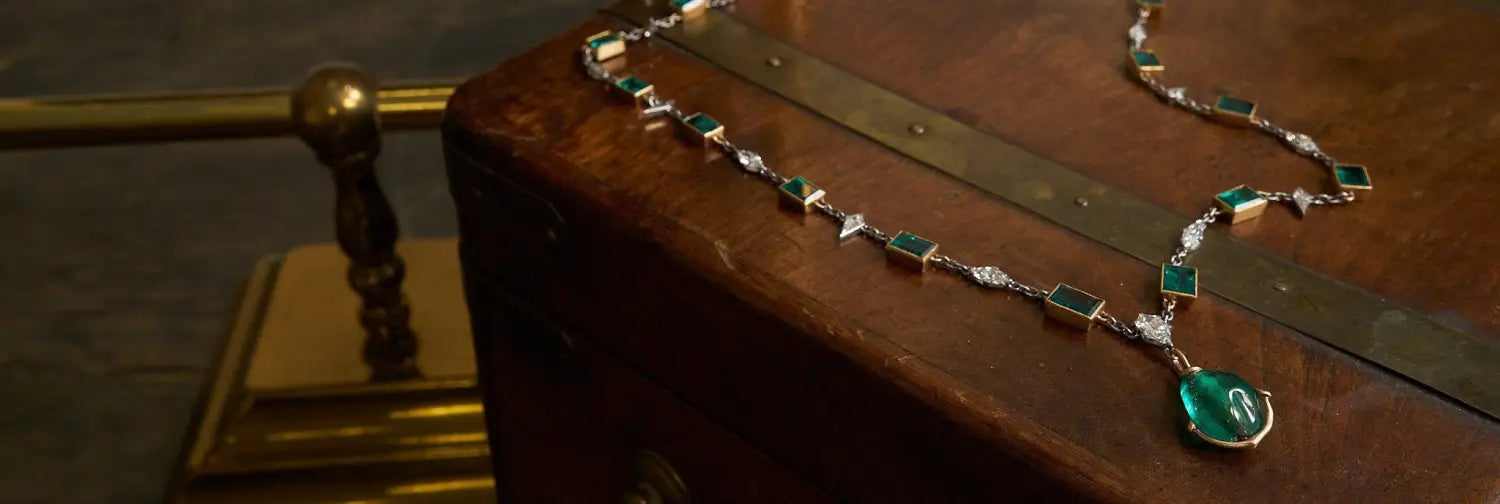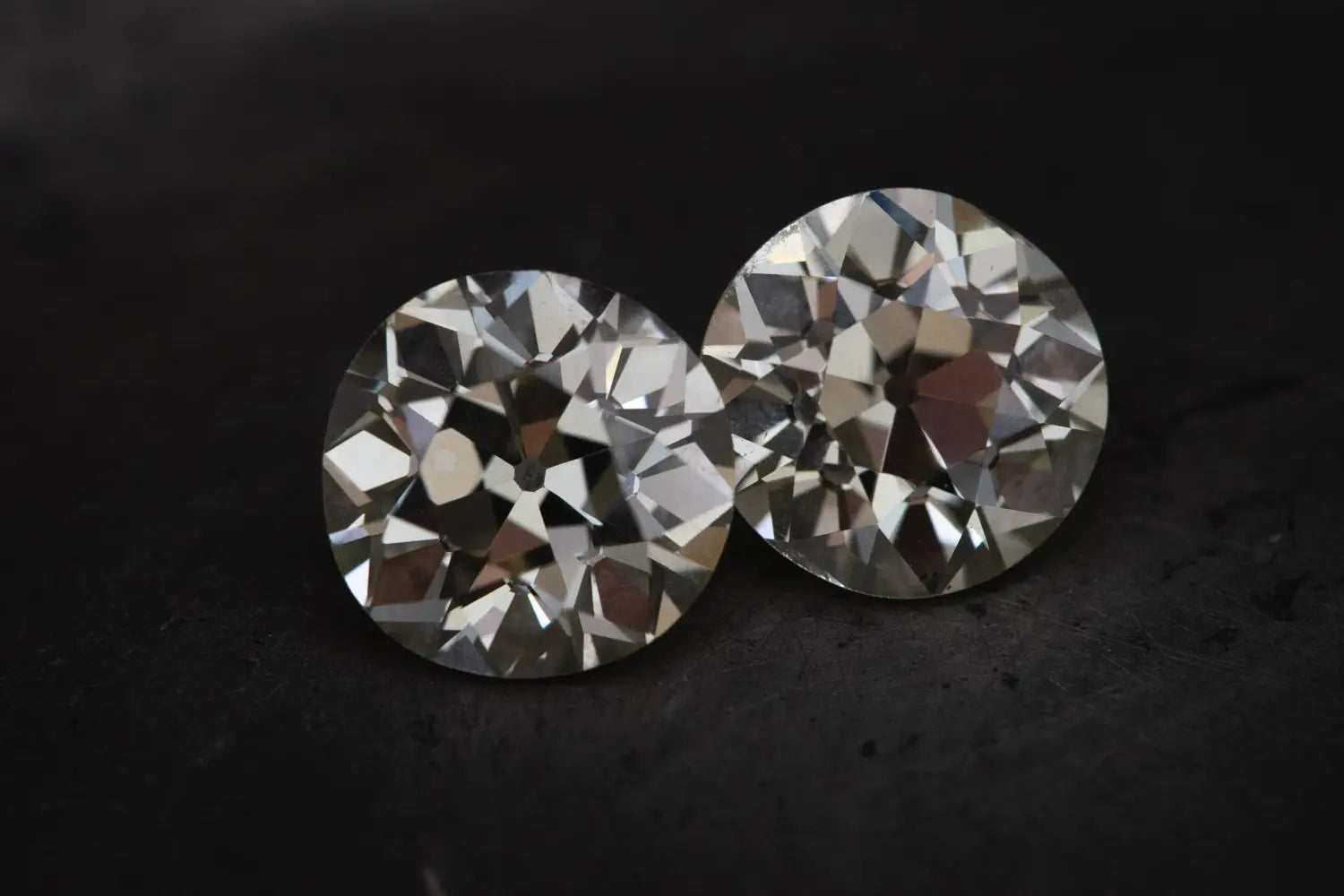
Emeralds
Muzo. Coscuez. Chivor. These names don’t mean much to the average person - but in the world of fine colored gems, they’re titanic. Colombia has long held a reputation for being the source for the world’s finest emeralds, and three mines - Muzo, Coscuez and Chivor - are the source of that reputation (no pun intended).
It’s all beryl… but it’s not all the same
Emerald is a variety of the mineral beryl, which is not the most common substance around: its key ingredient is beryllium, and that’s not just rare here on Earth — it’s rare in the universe, meaning that beryl is incredibly special.
But of all beryl varieties (others include red beryl, golden beryl, and aquamarine), it’s emerald that enthralls us the most. That deep, saturated green, at once earthy and otherworldly, makes emerald one of the world’s most important and sought after gemstones - a position it’s held for more than 4,000 years. This brings us back to Muzo, Coscuez and Chivor: the source of the world’s most coveted, richly saturated, and enchantingly transparent emeralds.
People know about Muzo; the intense blue green color of its stones has a global reputation. There’s even a memorable ancient myth that explains the gemstone’s origin - a story of love, betrayal, immortality, and sorrow passed down for thousands of years in the Muzo region. In this myth, two immortal beings named Fura and Tena were created by the Muisca god Are to populate the earth, much like Adam and Eve. The two were given eternal youth on the condition that they would remain faithful to one another - however, Fura did not remain faithful, and the two were stripped of their immortality. It is said that the tears that Fura shed as she aged and died became emeralds: treasure encased in the earth, waiting to one day be discovered.
Throughout time, the Chivor mine has proven to be just as important as Muzo in keeping the world’s jewelry houses supplied with precious Colombian stones — at times even out-producing Muzo. Coscuez has also been a major producer of very fine emeralds. A scant 10km from the Muzo mine, the Coscuez mine also sits in the Muzo region of Colombia. As a result, the mine’s stones (said by some to be darker and more desirable than stones from the Muzo mine) have often been labeled as Muzo emeralds, despite their slightly different origin.
But wait… how are emeralds identified as Colombian?
First things first: there aren’t a lot of mines producing stones with the color and weight that Muzo, Coscuez and Chivor have historically done. Zambian mines produce stones with intense color, but typically in very small weights. Further, Zambian stones have a different color character than Colombian stones: Colombian stones have a distinctive deep blue-green color. By contrast, African and Asian emeralds will often be described more as a yellow-green.
Of course, the eyeball test has given way to more sophisticated scientific methods: Colombian emerald deposits (and the stones found in them) stand apart from those found elsewhere because they arise from different geological processes than those that gave rise to most emerald deposits. The results can be viewed as a kind of fingerprint for the knowing gemologist to spot.
For a very long time, gemologists have considered the presence of “three-phase” inclusions (which form due to a combination of solid, liquid, and gaseous impurities in the material) as a reliable indicator of a Colombian stone. Although recent studies have shown stones from other countries consistently exhibiting similar three-phase inclusions, gemologists can still quite reliably distinguish a Colombian emerald from a Chinese, Pakistani, or Zambian one by the particular shape and pattern of three-phase inclusions it exhibits. We won’t go into more depth on that here, but to our fellow nerds: click here to learn more.
You can also use a Chelsea filter to flag likely Colombian stones. The filter is a piece of transparent material that blocks all but two wavelengths of light: green and red. When viewed through the filter, different stones will glow more red, or more green, depending on the unique chemical properties of the material. Colombian stones, rich in chromium, tend to show as deep red under the filter. Stones from Zambia and India, on the other hand, are rich in vanadium, which does not show much pink or red under the filter, if any.
None of these methods is conclusive by itself, but gemologists use a combination of these techniques and others (fancy, complicated things like spectroscopy to come to strong conclusions about a stone’s origins.
Green With Envy
We don’t mean to diminish the relevance of stones from mines in China, Zambia, or anywhere else. There are fine, gem-quality emeralds sourced from a number of sites around the world - but for that extra lush green hue, larger carat weights, and ancient Incan mystique… our money’s on Muzo, Coscuez, and Chivor.

